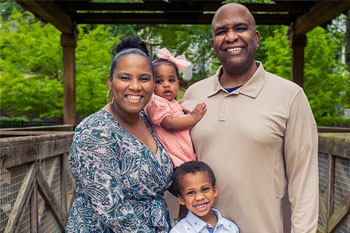 An adoption lifebook is far more than a simple photo album or baby book—it’s a powerful tool that documents your child’s complete story from the very beginning. These special books help adopted children form a complete sense of identity by providing information about both their birth and adoptive families, creating a bridge between their past and present that they can treasure throughout their lives.
An adoption lifebook is far more than a simple photo album or baby book—it’s a powerful tool that documents your child’s complete story from the very beginning. These special books help adopted children form a complete sense of identity by providing information about both their birth and adoptive families, creating a bridge between their past and present that they can treasure throughout their lives.
Lifebooks serve multiple important functions in an adopted child’s life. They help children understand how they came to be part of their family while providing access to details about their past that they won’t remember on their own. For children adopted as infants or toddlers, these books become the primary source of information about their early life and adoption story.
More importantly, life books help children develop language and comfort around their adoption stories. When a child has access to their story from an early age, they’re better equipped to answer questions about their past and share their adoption experience with others when they choose to do so.
Table of Contents
- Essential Elements to Include
- Addressing Difficult Topics with Honesty and Care
- Practical Creation Tips
- When and How to Use the Lifebook
- Writing Style and Perspective
- The Long-Term Impact
Essential Elements to Include in an Adoption Lifebook
The Foundation: Birth and Early Life
Every lifebook should acknowledge that your child was born, even if specific details are unknown. Include universal truths about birth and development, even when specific information is limited.
“Too often, adoption stories begin when the parents and child met, which results in some adopted children believing that they came from a plane or an adoption agency,” says Joni Mantell, LCSW. “Whether or not you have specific information about your child’s birth, it’s important to acknowledge that his birth happened.”
If you know little about your child’s birth family or early months, remember that you know more than you think. Begin with the facts you have and incorporate what experts call “universal truths”—we all begin by being born, and before that, babies grow inside their birth mother’s body.
Key People in Their Story
Your child’s adoption story includes many important figures beyond just birth parents and adoptive parents. Consider including:
- Birth parents and any known birth siblings
- Adoption professionals who helped with the placement
- Foster families or other caregivers
- Medical professionals present at birth
- Social workers and other support staff
- Anyone else who played a meaningful role in bringing your child to your family
Family Connections
Include family trees that honor both birth and adoptive families. Even if you have limited contact with the birth family, seeing the names of birth relatives can provide comfort to adoptees as they develop their personal identity.
Including these family connections is especially important when children encounter traditional family tree assignments in school.
Important Moments and Milestones
Document the moments your child won’t remember, but that were significant in their story:
- Birth details (even if approximate)
- Time in foster care or birth family care
- The day you received “the call”
- Meeting your child for the first time
- Adoption finalization
- Homecoming celebrations
Include photos, documents, and detailed descriptions of these events.
Items to Include
Some of the items that adoptive parents incorporate into their child’s adoption lifebook include:
- A copy of their birth certificate
- Sonogram pictures
- Baby footprints
- Hospital bracelets
- Medical records
- Pictures the child has drawn
- Awards
- Report cards and names of schools they attended
- Pictures of places the child has lived—even the hospital where they were born. (Google Maps is a great place to look for these!)
- Notes from birth relatives and siblings
- Flash drives containing videos of visits with birth parents
- Something written in their birth parents’ handwriting
- An illustration of their family tree
Addressing Difficult Topics with Honesty and Care
Age-Appropriate Truth-Telling
While it’s never appropriate to lie to children about their adoption story, it’s acceptable to omit complex details until children are developmentally ready to understand them. Adoption experts suggest that children should know their complete history by age 12, but this doesn’t mean overwhelming young children with difficult information.
For younger children, try using a simple, truthful explanation, like, “All babies grow inside a woman’s body before they are born. When the baby is ready, the woman has the baby. Sometimes she is ready to be a mom. Sometimes she is not ready because she is still in school, or she is too young, or she can’t give her baby the things she wants the baby to have. When this happens, she may pick another mom and dad to take care of her child. This is called adoption, and adoption lasts forever.”
Handling Unknown Information
When information is missing, it’s better to admit that you don’t know it rather than creating fictional details. For example, an adoptive parent might write, “I don’t know exactly where you were born, but I do know you lived in Los Angeles from the time you were one month old until we adopted you at eight months.”
If you don’t know all the details, write, “It seems…” or “From what I know…” Don’t pretend to have or know information you don’t.
Addressing Difficult Circumstances
Many adoptions occur against a backdrop of poverty, addiction or other circumstances. Help children understand these situations without creating worry or fear.
Consider using visual aids, to make it easy for your child to understand. One adoptive mom created a grid showing basic needs (food, clothing, education, and toys), then explained that children need all these things to help them learn and grow. She shared with her daughter that when her birth family realized that they couldn’t provide these things, they chose adoption.
“Honesty is really important, because in the absence of information, children will create a fantasy. We’re not helping them move on if we don’t tell them the truth,” shares Jillian Barath, an adoption social worker in Ohio. “You want to protect them. But they deserve to know the facts of their lives.”
She continues, “I heard a great suggestion recently to put information that might be too difficult or not age-appropriate at the time into a zip-up pouch in their binder. When the child is ready, they can open it up. That’s the beautiful thing about life books. The child is at the center of the process and in control of what they do with them.”
It’s essential to emphasize that the challenging circumstances faced by the birth parents led to your child’s placement. Make sure to reassure your child that this situation was not their fault and that they should not feel any sense of responsibility.
Practical Creation Tips
Format and Organization
Design your lifebook chronologically, treating adoption as a journey with a beginning and key milestones. Consider including a table of contents, as children often return to their life books repeatedly throughout their lives and appreciate being able to locate specific sections easily.
Many families choose large binders or memory books that allow for adding pages as children grow. Others prefer online services like Shutterfly to create professionally printed books. There are also lifebooks that have prompts ready for you to fill out, such as My Family, My Journey. This book includes pages to chart an adopted child’s journey, a pocket to place important documents and memorabilia, and family tree pages.
The format you choose matters less than ensuring it reflects your child’s story in a personal and meaningful way.
Protecting Your Investment
Life books are incredibly valuable to adoptees and may be shared frequently with friends and family. Take steps early to protect these precious documents by laminating pages, using protective sleeves, or working with professional bookbinding services.
Consider scanning and printing important original documents rather than pasting them directly into the book. Many parents choose to create a digital copy of the lifebook by taking a color copy of each page. The digital copy exists in case the original lifebook is lost in a move or destroyed.
Making It Interactive and Growing
The best lifebooks are living documents that grow with your child. Leave blank pages for future additions, like school pictures, artwork, and new memories from birthdays, holidays, or visits with birth family members. As children mature, they can begin participating in the creation and continuation of their lifebook in age-appropriate ways.
Consider including sections about your child’s heritage and birthplace, which can serve as educational opportunities and help children connect with their cultural identity.
Getting Others Involved
If you’re comfortable and it’s possible, consider involving others in the lifebook creation:
- Ask birth parents to write letters or contribute photos
- Include notes from adoption professionals or attorneys
- Ask medical professionals to provide developmental notes
- These contributions add authenticity and multiple perspectives to your child’s story.
When and How to Use the Lifebook
There are no strict age guidelines for reading adoption life books with children. Read them as often as your child wants or needs to hear their story. Many children continue to ask to hear their adoption story well into the elementary school years.
Consider where to keep the lifebook as your child grows. While it’s not a secret document, we recommend keeping it private for your child to review and share as they feel comfortable. Some families keep it on a coffee table when children are young. We suggest moving it to a more private location as your child gets older and develops preferences about sharing their story.
Writing Style and Perspective
When writing your child’s lifebook, avoid putting words in their mouth by using “I” statements from their perspective. Instead, write as though you’re speaking directly to your child: “You were born on a bright day in January…” This approach respects your child’s ability to interpret their story while providing the factual foundation they need.
Remember that your child and you may interpret the same photos or events differently. Make sure to provide accurate information and your understanding of events while leaving room for your child to develop their own feelings and interpretations.
The Long-Term Impact
Creating a thoughtful, honest adoption lifebook serves multiple purposes throughout your child’s development. In the early years, it helps establish comfort with adoption language and concepts. During school-age years, it provides a resource for projects and questions from peers. In adolescence and adulthood, it becomes a treasured connection to their complete identity and story.
Most importantly, the process of creating a lifebook helps you as parents develop the language and comfort level needed for ongoing conversations about adoption throughout your child’s life. It demonstrates your commitment to honoring all aspects of your child’s story and identity.
Starting Your Lifebook Journey
Remember that no two adoption journeys are identical, so every life book will be different. Don’t get caught up in comparing your book to others or feeling overwhelmed by seemingly perfect examples online. Focus on what’s important about your child’s specific adoption story and create your lifebook around those unique elements.
The most important rule for creating an adoption lifebook is that it accurately and positively reflects your child’s story. As long as you take the time and effort to create something special and truthful, your child will treasure their lifebook as a meaningful connection to their complete identity and story.
Your child’s adoption story begins before you meet them, and it continues every day as they grow in your family. A well-crafted lifebook honors both parts of that ongoing story, providing a foundation for healthy conversations about adoption throughout your child’s life.
Heidi Keefer is a Content Creator for Lifetime Adoption and has over 15 years of experience in the field of adoption. An author of thousands of articles and social media posts over the years, Heidi enjoys finding new ways to educate and captivate Lifetime’s ever-growing list of subscribers.
Heidi has a keen eye for misplaced apostrophes, comma splices, and well-turned sentences, which she has put to good use as a contributor to Lifetime’s award-winning blogs. She has written and published hundreds of adoption articles which explore the various facets of domestic infant adoption today.






0 Comments